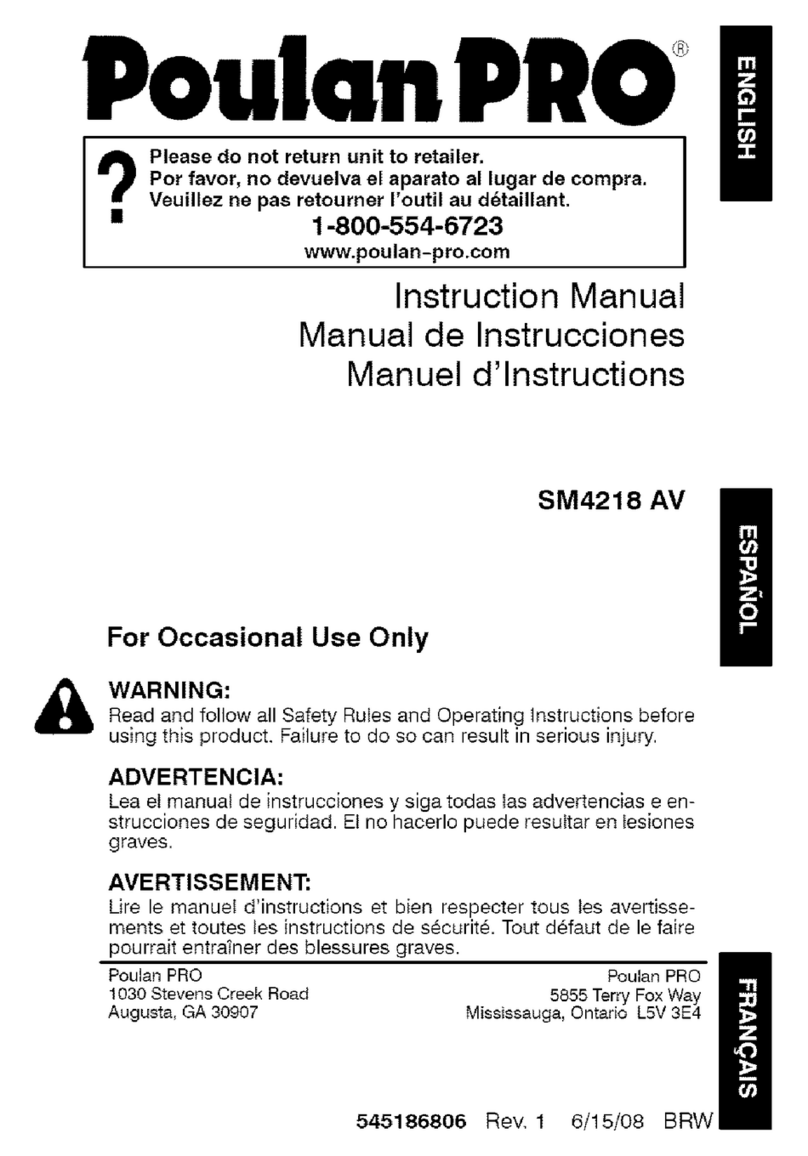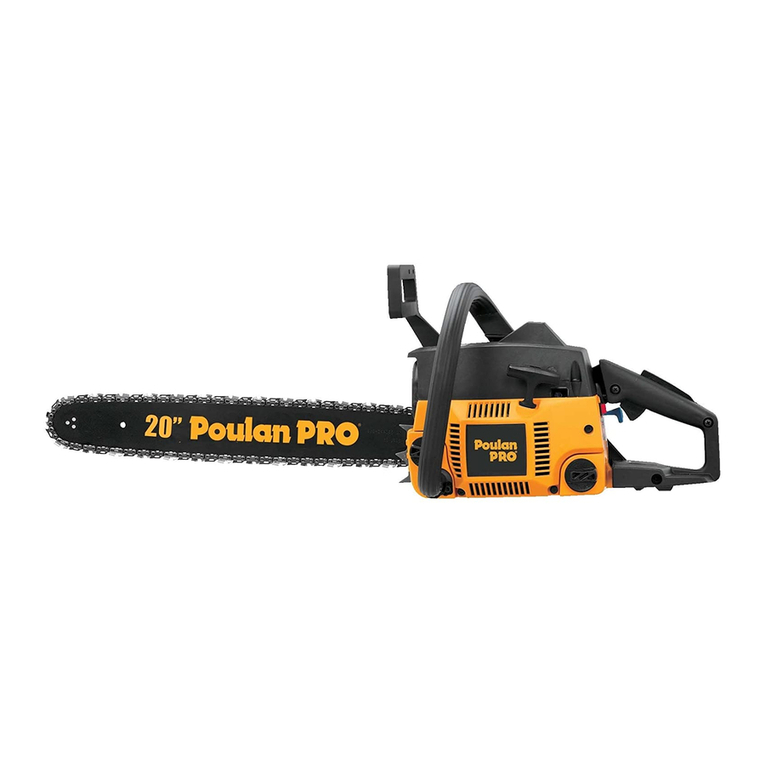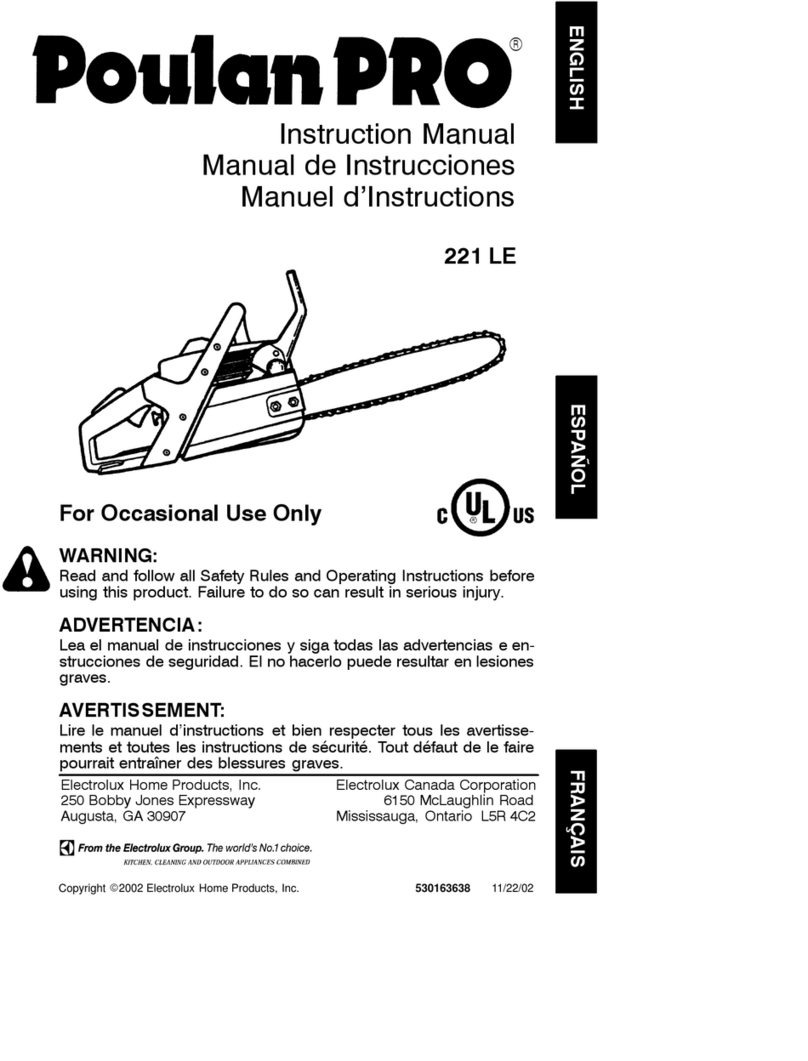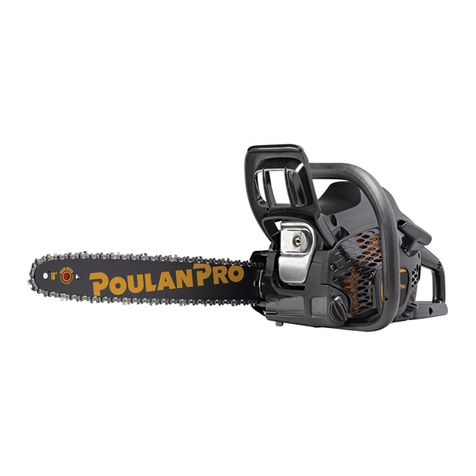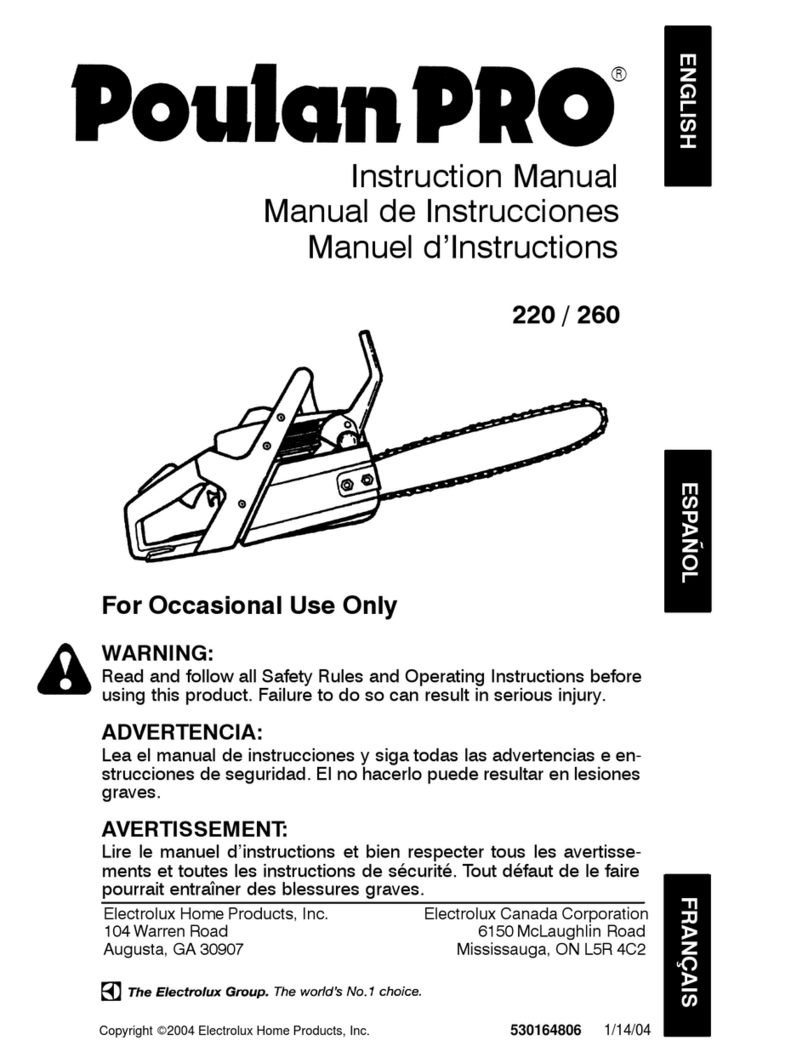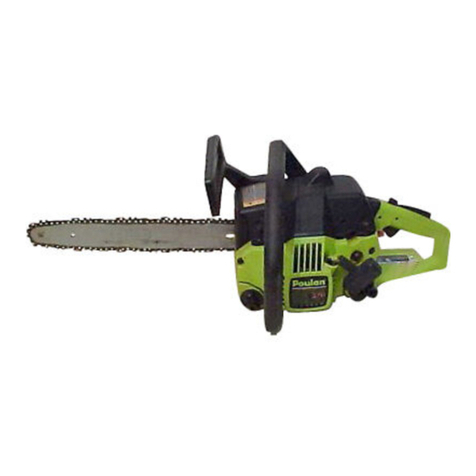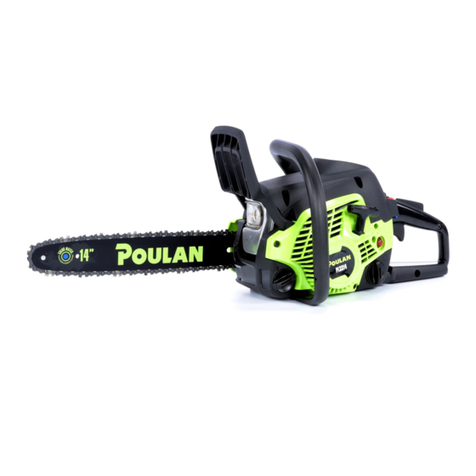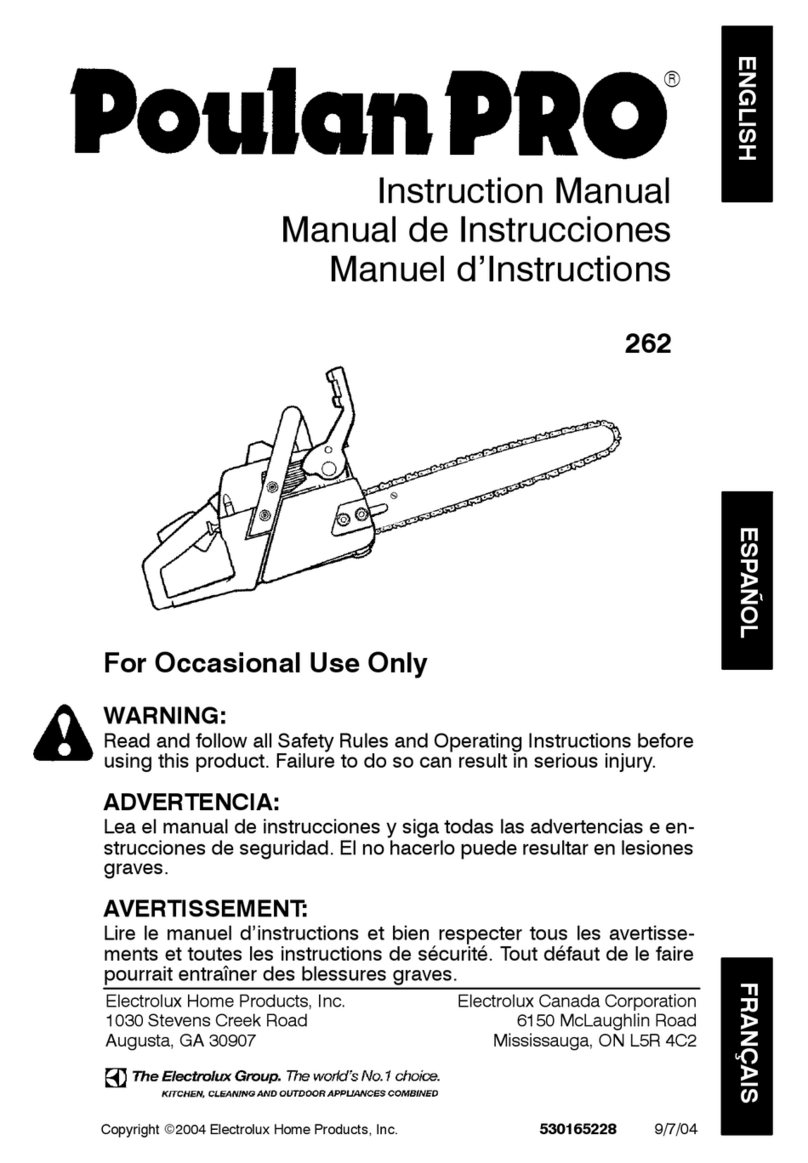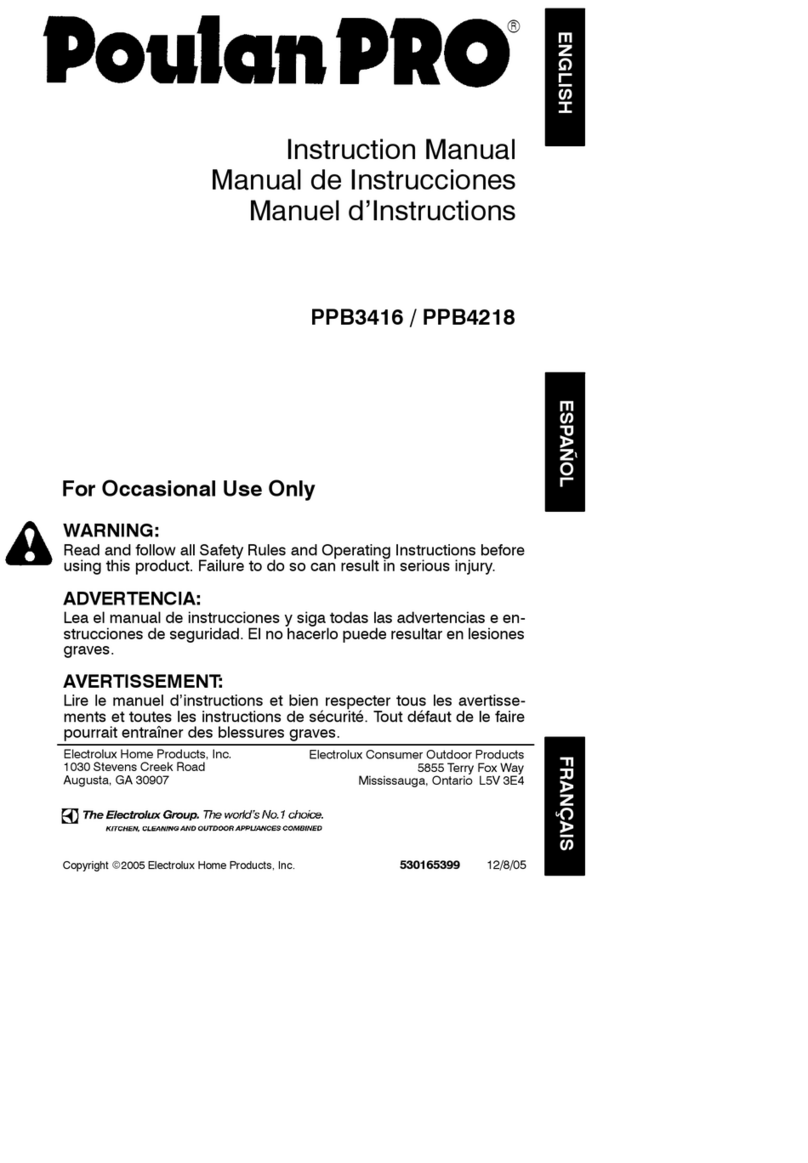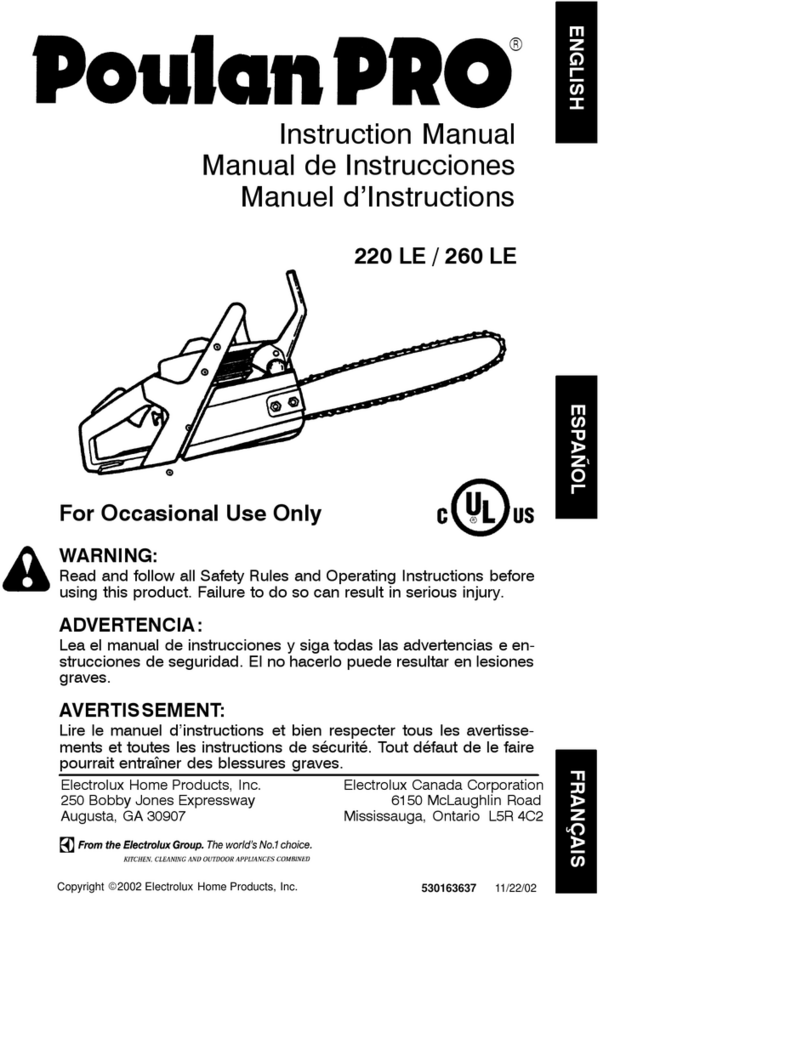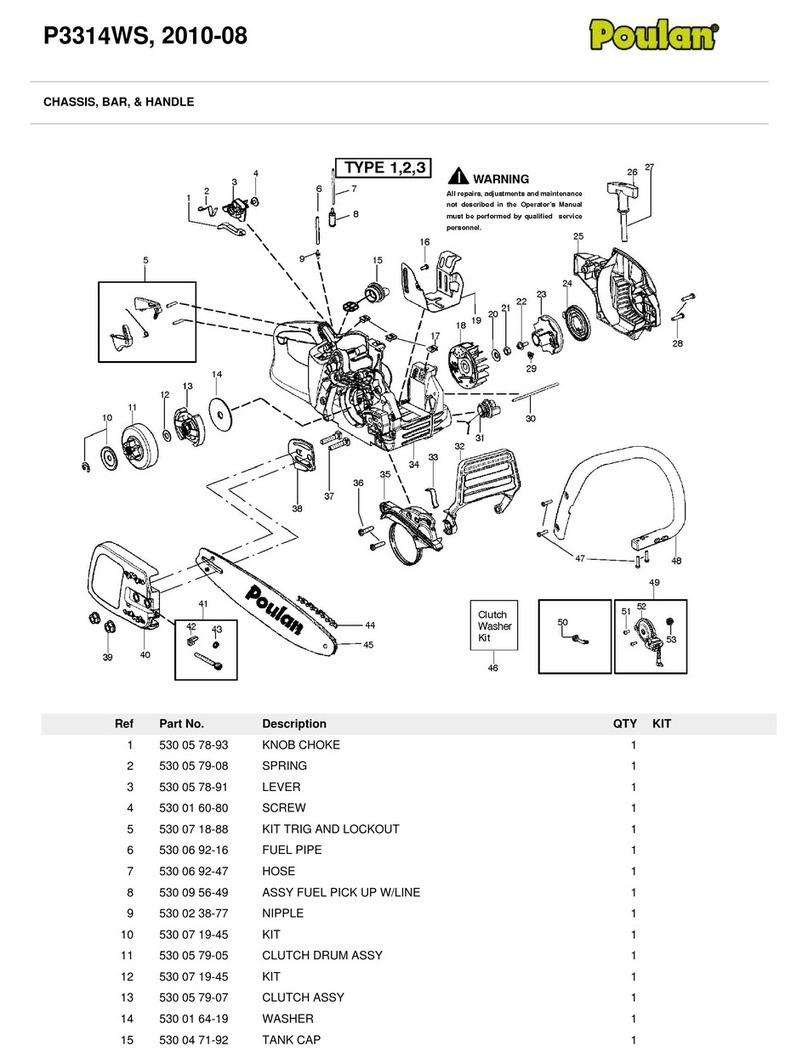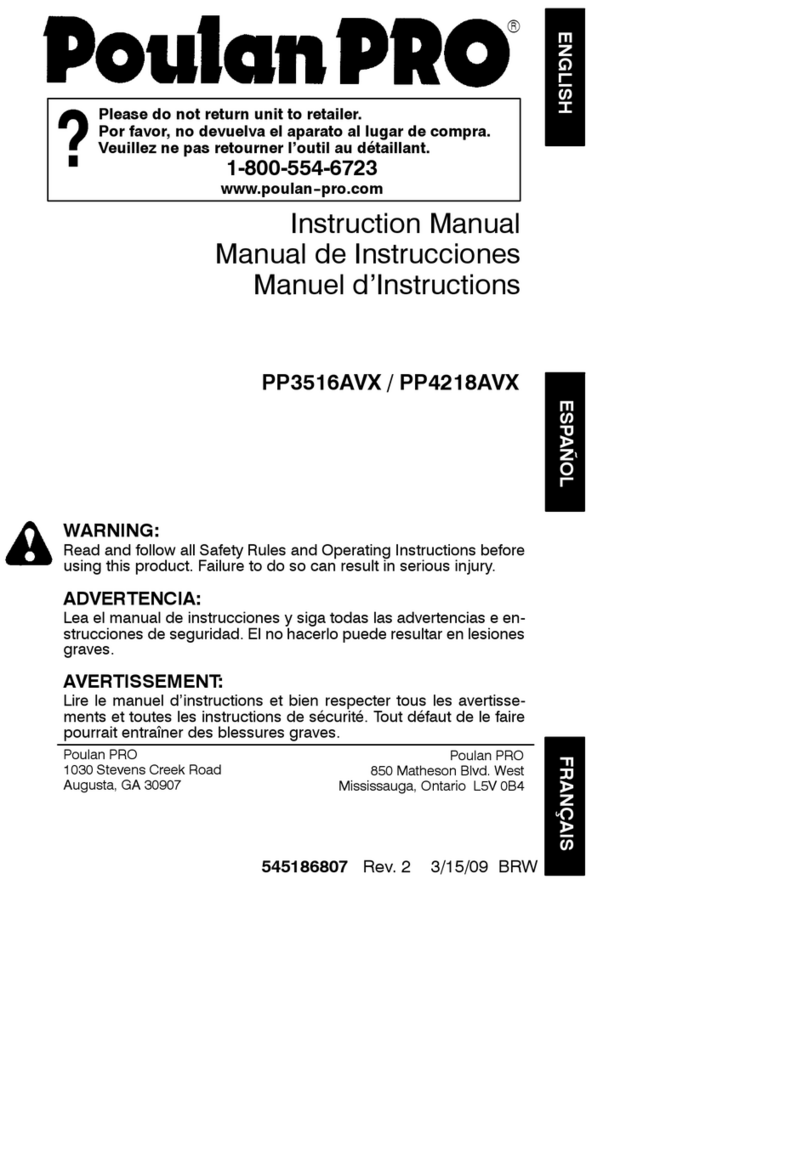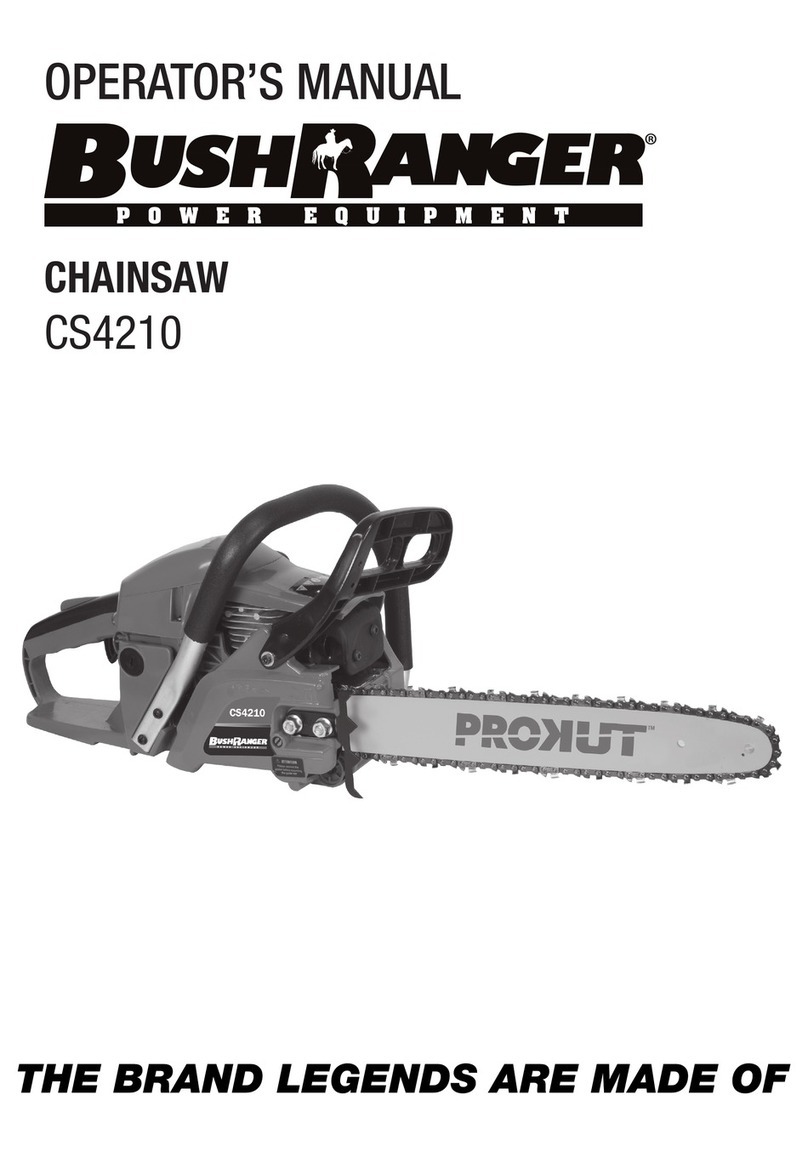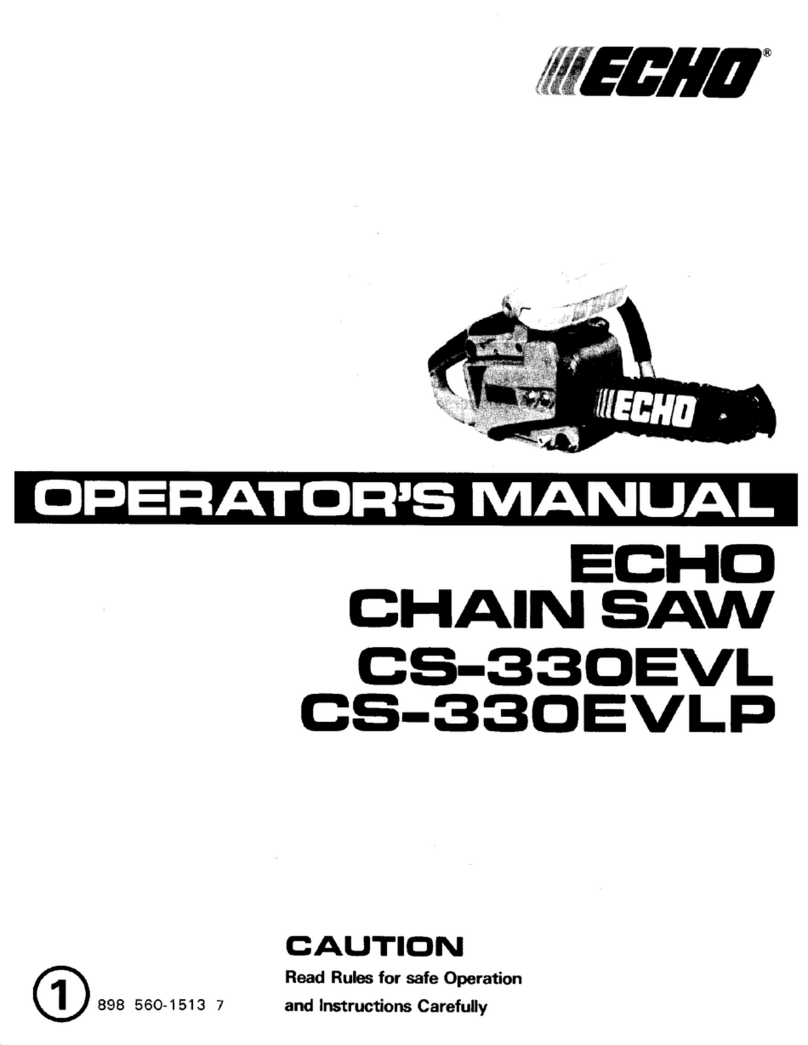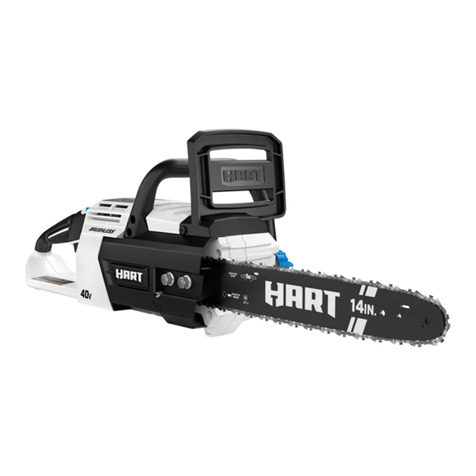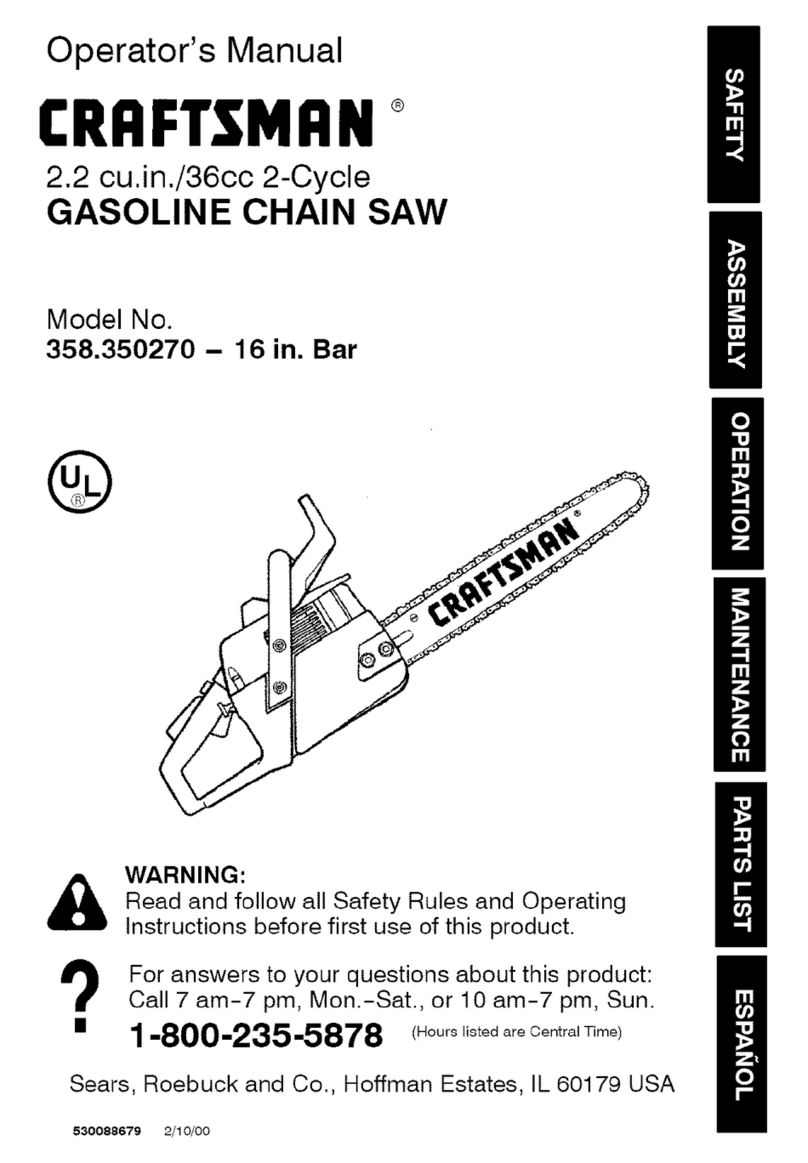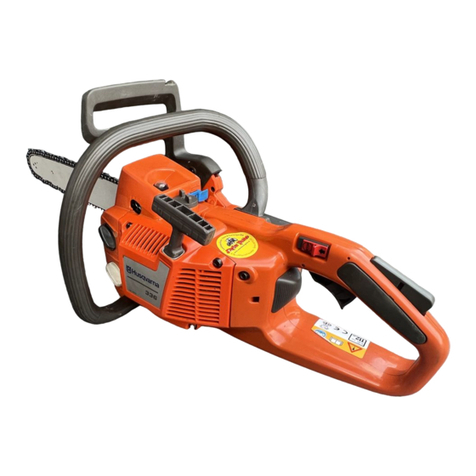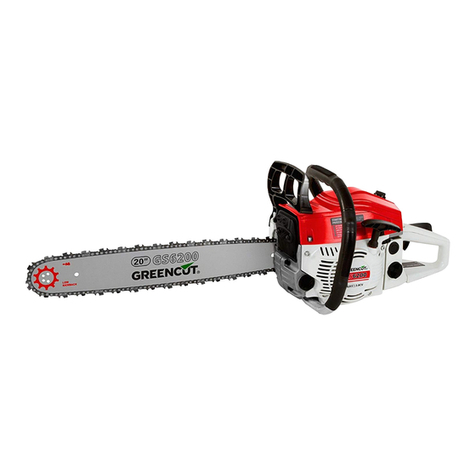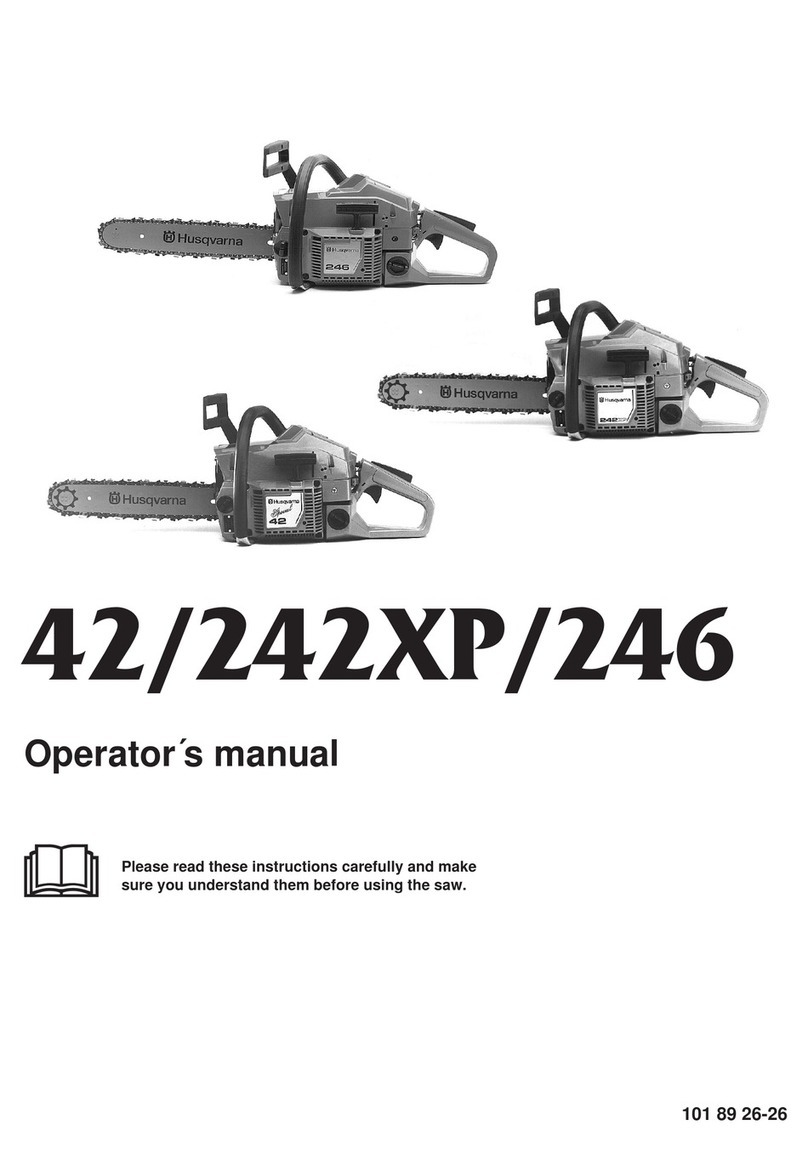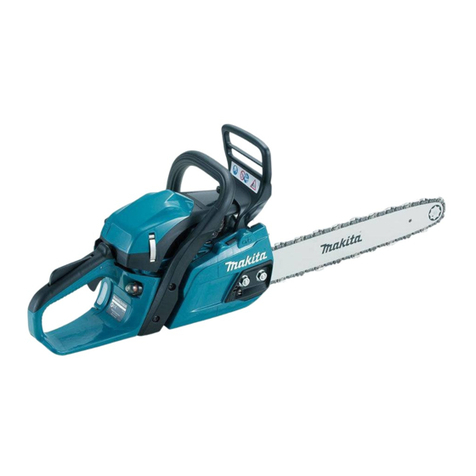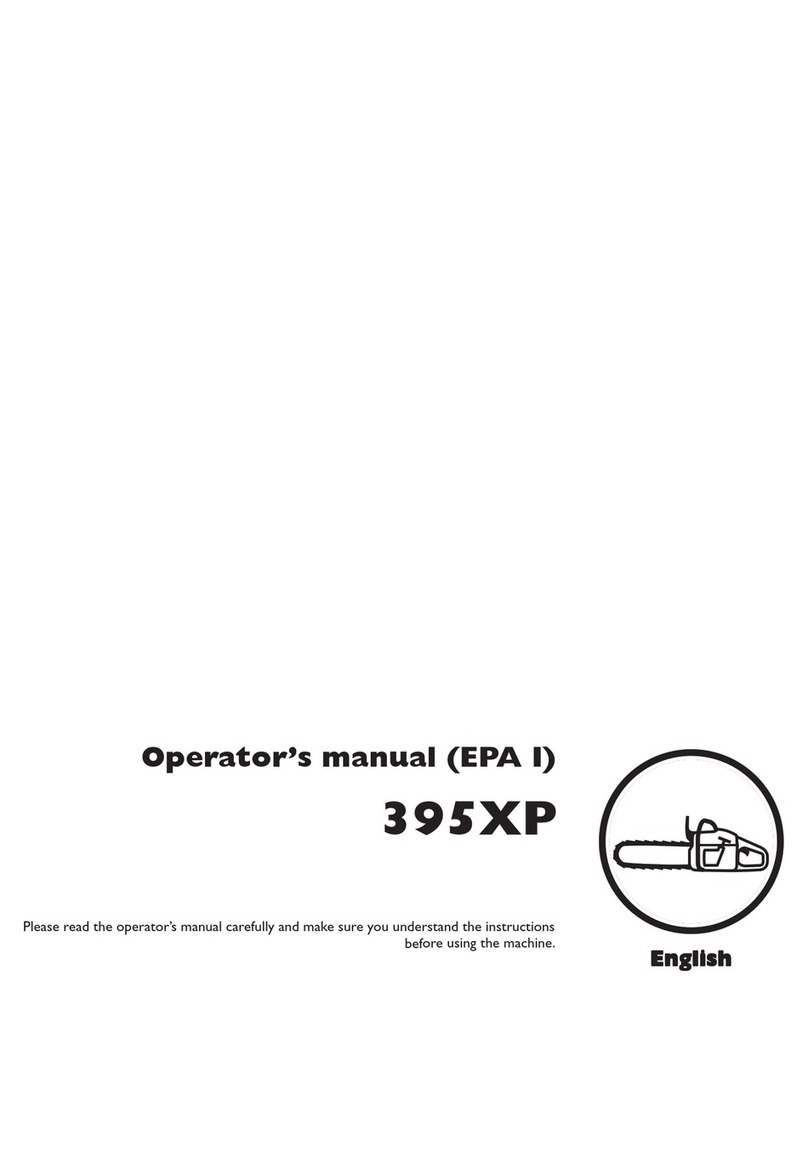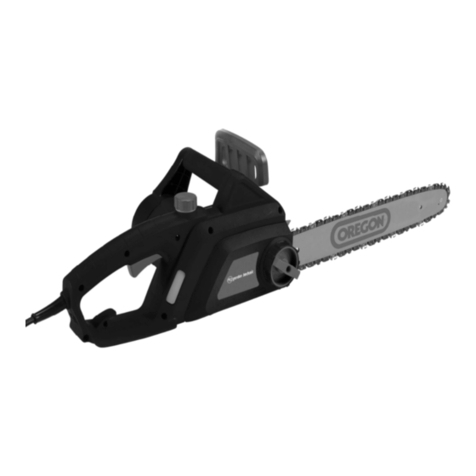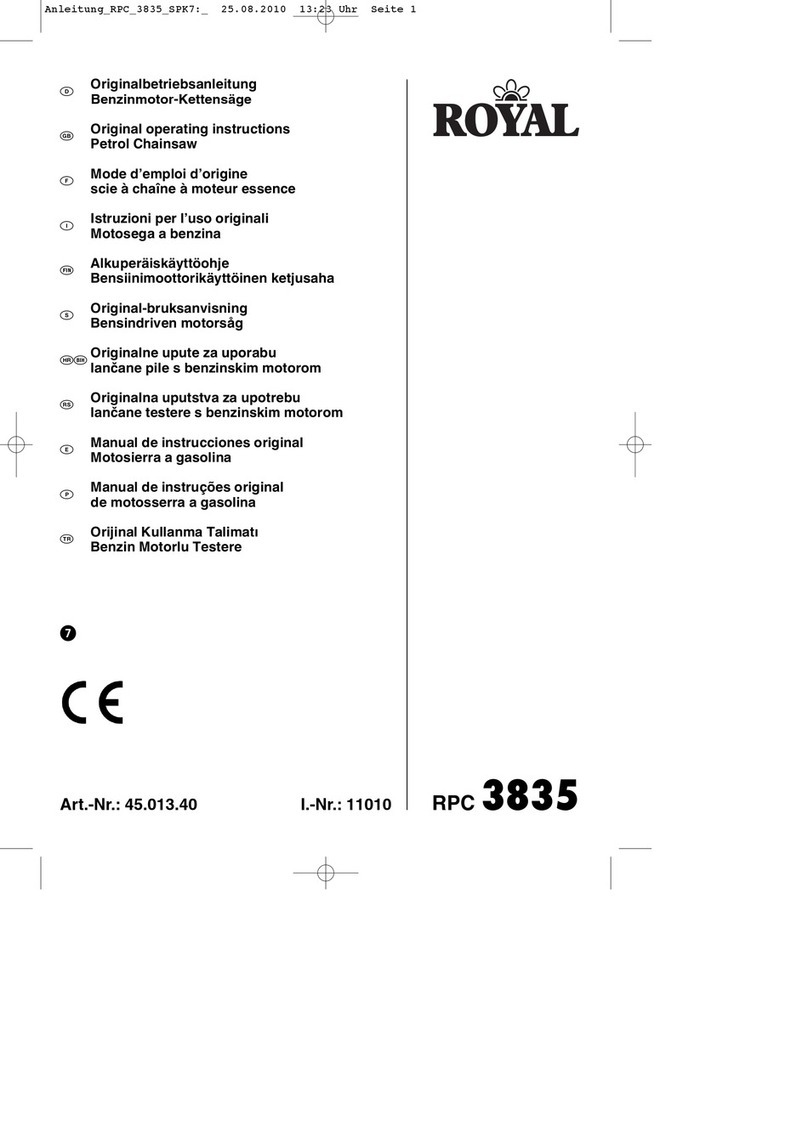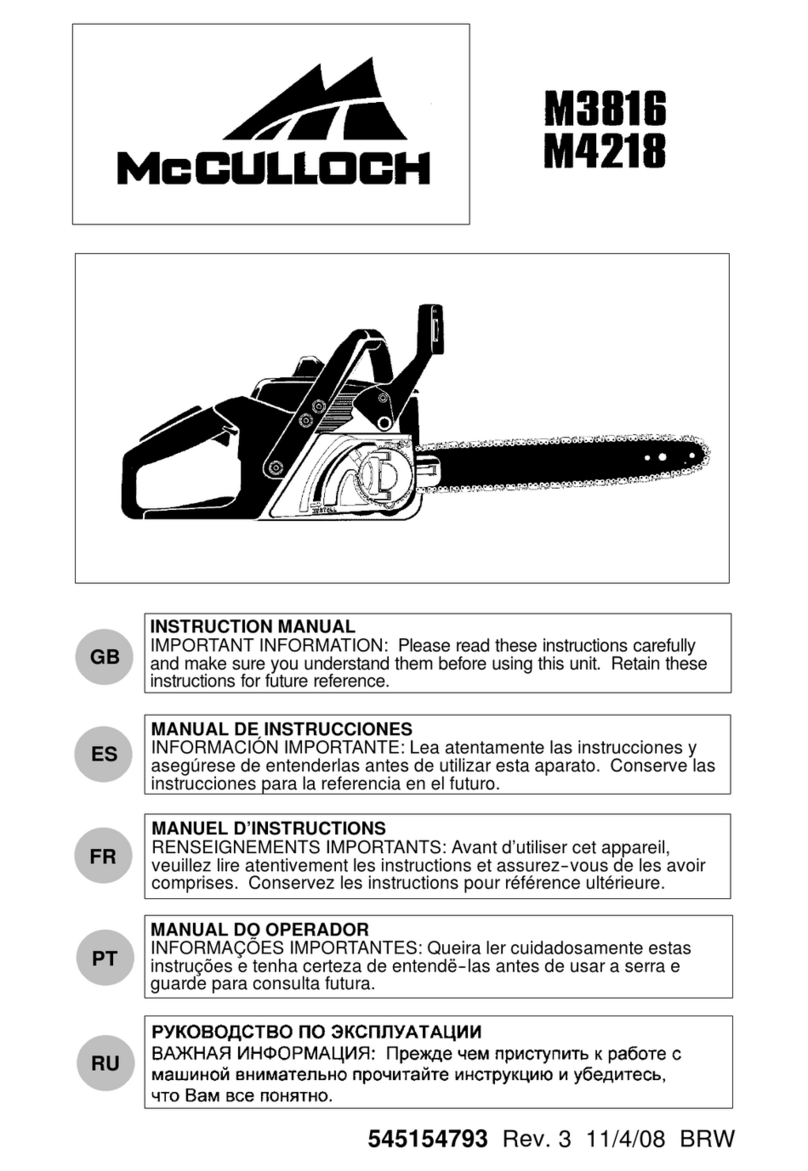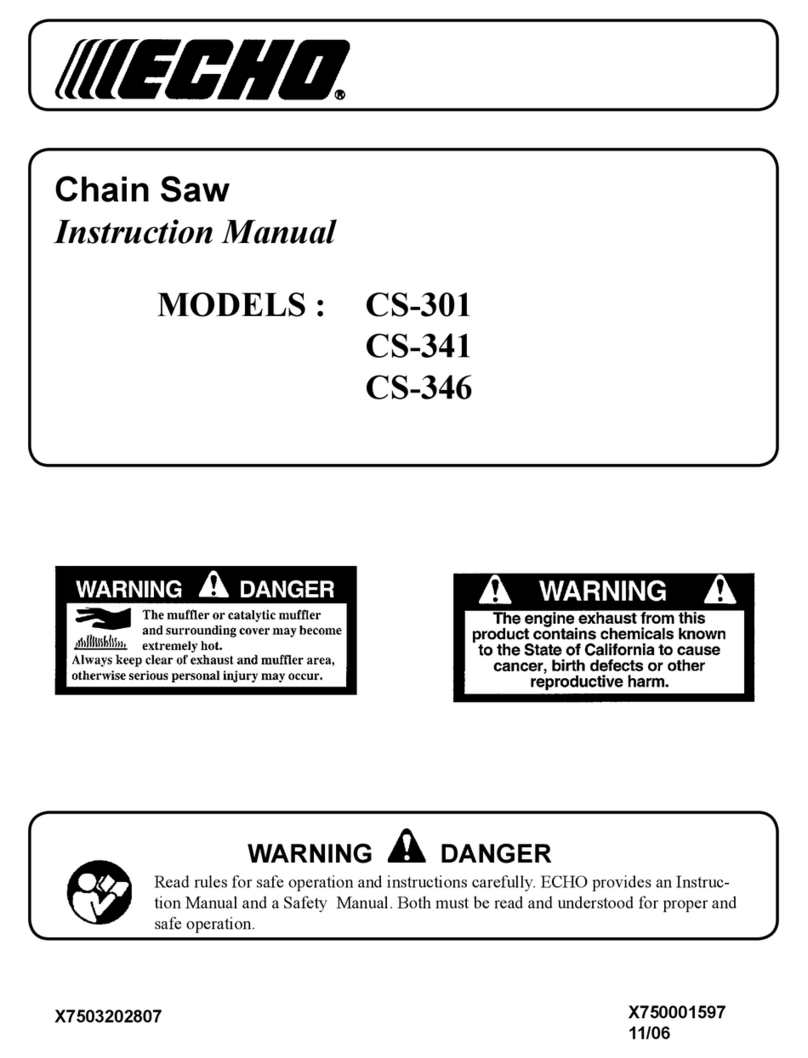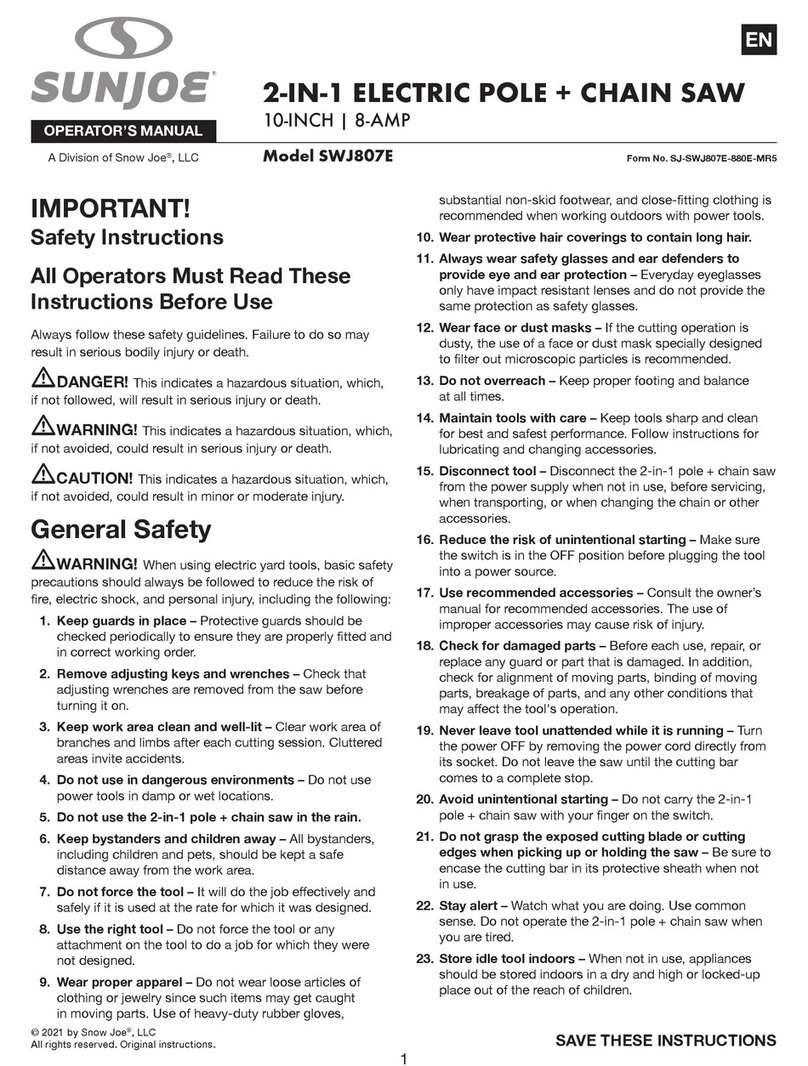KICKBACK
SAFETY
FEATURES
A wnnHtxC: irefor
owrng
features
.:+: i
- .:-' sa* to
l^e
p 'educe
the
:: :-L' . :.:a:' ^:r'/ever
SUCh
features
'-.
. z - -3:e
lns danger.
As a
' : - -:r, -s€-::^al .eiyonlyonsafetyde
':- --s:'olow allsafety
Precau-
- -
!1':31'r-S
and
maintenance
Inthis
.. -1 '- 'e c avord
kickbackand other
:- .r
- :^ :an.esl,lt
insenous
Inlirry.
. :+:-,:e:-KrckbackGuide
Bar,designed
^: a small
radiustipwhich
reducesthe
s:s Jf the
kickbackdanger
zoneonthe
:a' tro.A Reduced-Kickback
Guide
Bar
^as
beendemonstrated
losignificantly
re-
cucethe
numberandseriousness
of
kick-
backs when lesled in accordance
with
salety
requirements
forgasoline
powered
chainsaws
assetby
ANSI8175.1
.
Feduced Kckback SVmmetrrcalGurde
Bar
Syrrlrrrclrca Cu.ie Bar
Larqe
RadlusT
P
Low KickbackChain,designed
with a
contoured
depthgauge
and guardlink
whichdeflect
klckbacklorce and allow
woodto
graduallyrideintothecutter.Low-
KickbackCharn
has met kickback
per
formance
requrrementswhentested
ona
representativesampleof chainsaws
be-
low3.8cubrc
inchdisplacementspecified
inANS|B
175.1. r
D nlr'4..o'
pr[-ll 1-qdrp,),,...,.dt,,t
', \*---=
- tl I
\t I Lrrt
ect\
I k okbnck{orce
Low^K,c[baL]h \ anclal ows woori
(,Ila
rl lo qrn(iuay lClC
rntoalrilef
\\ Can Obslnrct l\"4:rlefa
Nol a Low.-KrckbackClra
I
. FrontHand
Guard,
designedto reduce
the
chanceof
your
lefihand
contacting
thecharn
rf
vour
handsllDsoffthe
fronthandlebar.
. Positionof front
and rearlmndlebars.de-
sronedwithdistancebetween
handlesand
'rn-lrne
witheachother.
Thespreadand
"in
line position
ofthehands
provided
by thrs
designworktogether
to
give
balanceand
re
sistance
Incontrolling
the pivot
of thesaw
backtoward
the
operator
ifkickbackoccurs.
CHAIN BRAKE AND CKA ANGLE
. Chain
Brake,designedtostop
the
chain
in
theeventof
kickback.
Awanlttllc: wEDo
NorREP,
RESENTAND YOU SHOULD
NOT AS-
SUN4E
THAT THE CHAIN BRAKE WILL
PROTECTYOUINTHEEVENTOF
A KICK-
BACK Krckback
is a lightningfast aclton
whrchthrowsthebarand
rotatangchain
back
andup
towardtheoperator.
Kickbackcanbe
causedbvallowrng
contactofthebar
tipinthe
danger
zone
w(h anyhard
object.Kickback
canalso
b€causedbyprnchrng
thesawchaln
along
thetopofthe
guide
bar.
Thisaction
may
push
the
gulde
bar
rapidly
back
towardtheop-
erator.
Efiheroftheseevents
maycause
you
tolosecontrolof
the
saw
whrchcould
resultin
serious
inrurvorevendeath.
DO NOTRELY
UPON
ANY
OF
THEDEVICESBUILT
INTO
YOUR
SAW YOUSHOULDUSE
THESAW
PROPERLY
AND CAREFULLY
TO AVOID
KICKBACK. Reduced-kickback
guide
bars
and low-kickbacksaw chains reducethe
chance
and magnrtude
o{ kickbackand are
recommended.
Yoursawhasa low
kickback
chain
andbaras originalequipment.
Repairs
onachain
brakeshouldbe
made
by
anautho
rized
servicing
dealer.
Take
yourunitlo the
olace
ofourchase
ifourchased
froma servic
ingdealer,
ortothenearest
aulhorized
master
servrceoearer.
. llp contact
in
some
casesmaycausealight
ningfastreverseREACTION,
kicking
guide
bar uoand backtoward
ooeralor.
. Pinching
thesawchainalongthe
lopofthe
guide
bar may push
the guide
barrapidly
backtowardthe operator.
. Eitherof thesereactionsmavcausevouto
losecontrolol lhe
saw
whiciicould
resultrn
serious
injury.Do notrely
exclusively
upon
devices
built
into
your
saw.
A wnnrutruc: compuled
kickback
angle
(CKA)
listedon
your
sawand
lisledinthe
CKA
tablebelowrepresenlsangleof
kickback
your bar and chaincombinations
will have
when tesledin accordance
withCSA (Cana-
dianStandards
Association)andANSIstan-
dards.
When
purchasing
replacementbar
and
chain.considerationsshould
be given
to the
lowerCKAvalues.
Lower
CKAvalues
repre
senlsafer
anglestotheuser,
highervalues
in
dicate
moreangleand higherkick energies.
Computedangles representedindicatetotal
energy
andangleassociated
withoutactivation
o{thechainbrakeduring
kickback.Activated
angle
representschainstoppingtame
relativeto
actvation
angleof chainbreakand resulting
kickangleolsaw.
In
all
caseslowerCKA
val
uesrepresenta sa{eroperating
environment
fortheuser.
Thefollowing
guide
bar
andchaincombina
tionsmeel
kickbackrequrrementsof CSA
Standards
262] , 262.3,& ANSI 8175.'1
whenusedon saws listedin thismanual.
Use of bar and chaincombinationsother
thanthose
listedisnot
recommendedand
may not meetthe CKA requirements
per
standard.
** \-o
